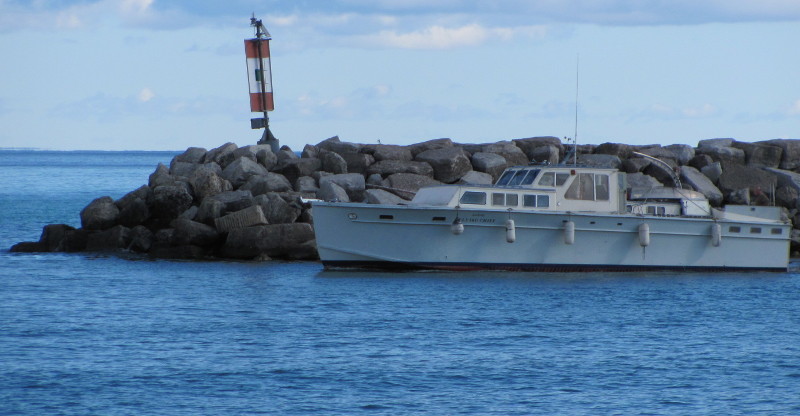Being fortunate enough to live on the shores of Georgian Bay with several hundred feet of waterfront, I am privileged to experience one of the most stunning views the Great Lakes has to offer. Daily, I stand on my deck marvelling at the colours that paint the sky and water, and as I gaze, I can see dozens of boats dotting the Bay.
Some are mere specks moving slowly across the horizon, some stay still, fishing the depths, and others roar around in circles making waves. My father likes to refer to our shores as the ‘Meaford Riviera’. because just about every weekend during the summer we get a flotilla of boats anchoring nearby to enjoy the sun and surf. All these boats coming and going, sitting and racing has got me thinking about boat safety, because the ocean isn’t the only place where accidents happen. In fact the Great Lakes has been host to some famous shipwrecks as well.
Foremost in popularity and mystery is Le Griffon, a seventeenth century barque built by René-Robert Cavelier which set sail in August of 1679. It sailed through Lakes Erie, Huron, and Michigan on its maiden voyage, going where only canoes had gone before. On its way back, laden with traded goods from the Natives of the region, it went missing, and has eluded discovery since. Many wrecks have been discovered and were thought to be Le Griffon, but nothing has been proven.
Another ship of great renown which sank in Lake Superior is the SS Edmund Fitzgerald, which was immortalized in the Gordon Lightfoot song, The Wreck of the Edmund Fitzgerald. For thirteen years it was the largest ship travelling the Great Lakes and remains the largest to have sunk in them. The Edmund Fitzgerald carried tactonite iron ore from Duluth, Minnesota (Lake Superior) to Detroit for seventeen years until the fateful night in November of 1975 when it sank. A wild storm caught the ship as it travelled and it sank in Canadian waters near Deadman’s Cove. All twenty-nine members of the crew died and no bodies were discovered.
It is estimated that over 6,000 ships have sunk in the Great Lakes. Boat safety isn’t difficult.
Number one, always have a life-jacket. It’s that simple.
Number two, be weather conscious. It’s not hard to check the weather forecast these days with apps and websites that provide long-term projections of atmospheric conditions.
Three, use your common sense.
Four, make sure you’re not the only person on the boat who knows how it works. Having another set of hands to help with and take over tasks is important.
Five, don’t drink and drive. It doesn’t matter if it’s a boat, it can still impair your judgment and slow your reaction time.
Six, tell someone on shore, like a family member or the marina staff where you’re planning on going and how long you’ll be.
And seven, have a proper Pleasure Craft Operator Card, which is a boating license.
Relaxing on the water is fun, but only when it’s safe; please don’t add to the thousands of shipwrecks lying at the bottom of the Great Lakes this summer.












